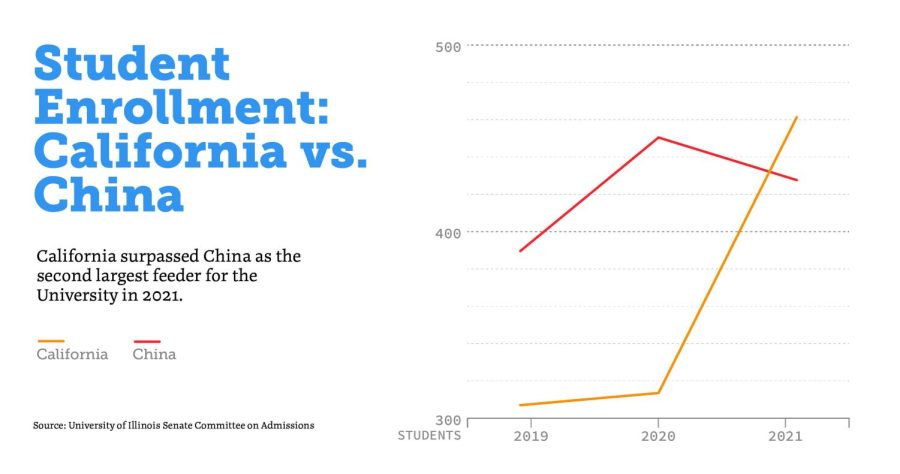California exceeds China as largest source of nonresident enrollment
Apr 26, 2022
For the 2021-2022 academic year, the University saw an increase in out-of-state enrollment, with the number of new enrollments from California now outnumbering new enrollments from China, which used to be the University’s largest source of nonresident enrollments.
The University’s enrollment goal for new students in the 2021-2022 academic year was 7,700 students, but in actuality, 8,303 students ended up enrolling, according to a presentation given to the University Senate Committee on Admissions in March.
This was due to an increase in the number of resident, nonresident and international students.
Dan Mann, the associate provost for Enrollment Management, said that much of the unexpected increase in the number of enrolled students was due to a higher than anticipated yield rate — the rate of accepted students who decide to commit to the University — compared to previous years.
“Yield rates were just much higher than anticipated,” Mann said. “Probably most people would not have anticipated that, given that we had no on-campus visits. We were doing everything virtually and we were still in the middle of a pandemic.”
Get The Daily Illini in your inbox!
Of the 603 additional students who enrolled in the University, 355 of them were from other states such as California, which accounted for 136 of those students.
“The place where we saw the largest increase in applications was with nonresident applications in California,” Mann said. “I think more Californian students applied because the Common App was something available to them.”
Although actual yield rates were higher than expected for international countries, there was a decrease in the number of enrolled Chinese students in 2021 compared to 2020, though the University also saw an increase in international students coming from countries like India and South Korea.
Mann also noted that most of the other Big Ten universities, including the University of Michigan and Purdue University, also experienced a higher enrollment due to an unexpected increase in yield rates.
Moving forward, the University now has three ways students can apply: the Common App, Coalition App and the myIllini website.
Zhao said he believes this unexpected influx in nonresident and resident enrollment will self-correct as the University collects more data on the newly implemented Common App and as the University intentionally reduces the size of the incoming freshman class.
“I expect that much of the growth was due to the pandemic, where Chinese students were less interested in going abroad,” Zhao, freshman in LAS, said. “Also the fact that the University went test-optional probably pushed a lot of students to apply that normally wouldn’t.”
Mann said the University has already seen an increase in the number of nonresident and international applications but will closely monitor admittance so that enrollment remains within the bounds of University resources.






